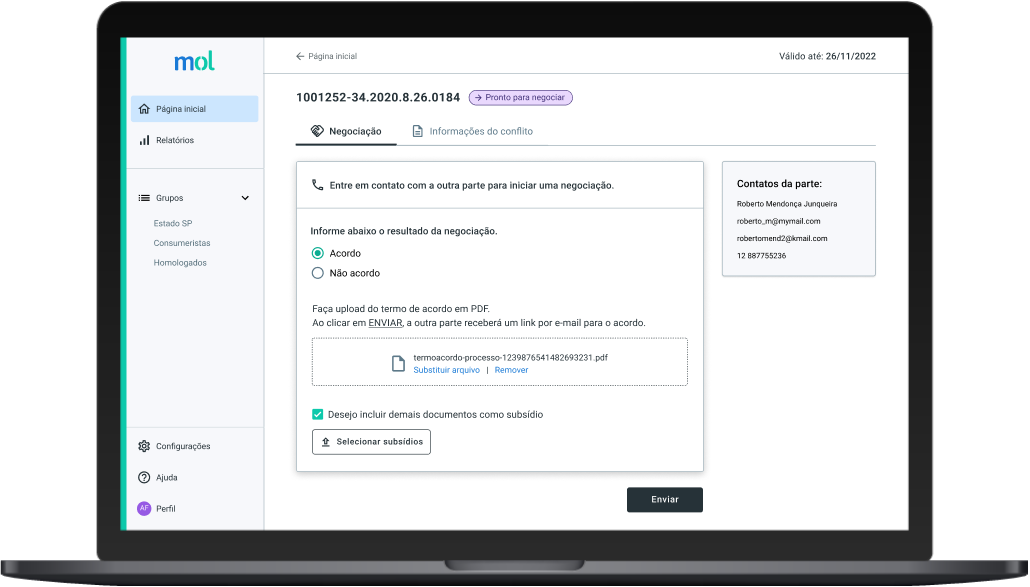
Company
MOL - Mediação Online
About the Company
MOL is a lawtech that has been operating since 2015 with technology for online conflict resolution. It operates in the B2B2C and B2G segments.
Period
Nov/2021 to May/2022
Responsible team
Aloysio França (Product Designer / líder)
Bruno Carneiro (Product Designer Jr.)
Natália Bertão (Product Manager)
My Role
To explore the proposed problem and execute the solution, going through the stages of research, defining the strategy, ideation, and designing the application interface.

Since the beginning of the pandemic, MOL has created a campaign called 'Justice Won't Stop' (A Justiça não vai Parar) and has provided its digital tool for online conciliation hearings to the courts of Brazil free of charge, with the aim of digitizing the conciliation process in the Brazilian courts. Due to this experience, the following pain points were identified:
As a starting point, we chose to use the CSD Matrix due to its effectiveness as an alignment tool among
the stakeholders involved. This approach allowed us to establish a clear understanding of the objectives
and needs of the users, ensuring that everyone is on the same page.
The main points highlighted were:
After analyzing the results of the CDS Matrix, we convened the stakeholders for a new workshop, the Value Proposition Canvas.
This activity was crucial to enhance and direct our value proposition, exploring various perspectives and ensuring
strategic alignment with the interests and needs of the users.
The dynamics were extremely constructive, providing numerous valuable insights on how to address the previously identified problems.
 Customer Jobs
Customer Jobs Pains
Pains Gains
Gains Gain Creators
Gain Creators Pain Relievers
Pain Relievers Products and Services
Products and ServicesThe research script was based on all the hypotheses and questions raised during the workshops. It was necessary to deeply understand the work routine of potential users and map the relevant points.
The interviews were divided into two rounds. In the first round, we aimed to delve into the routines and main challenges of the users. In the second round, we presented a flow of how the product could be. In total, we interviewed 10 public servants and 6 magistrates, obtaining essential information about their impressions regarding asynchronous online negotiation.
All interviews were recorded and transcribed for maximum utilization of the data used in generating insights.
We created an Affinity Diagram to present the research findings to the leaders and stakeholders.
The research brought positive results in relation to the raised hypotheses and demonstrated a clear interest of the courts in using an asynchronous online negotiation product. These findings provided valuable insight into potential legal market demand and support the feasibility of developing such a solution to meet the needs of the court system.
Below are some of the main points reported.








The personas were built based on the conducted research, the routines of the interviewed users, their pain points, and success metrics.


The most critical aspect of the product would be the data transfer between systems. Since the APIs of the courts are not open, integration would be unfeasible at this time.
We conducted thorough benchmarking to broaden our perspective on how the market is efficiently and easily importing databases for any user.
Some of the tools studied were:






The benchmarking with all screens and comments can be accessed at THIS LINK (opens in FigJam).
After the benchmarking, we understood that currently the best way to import a spreadsheet with low error probability is by using a "From x To" function in a form wizard.
The "From x To" function prompts the user to relate each column name in their spreadsheet with the expected name within the system.
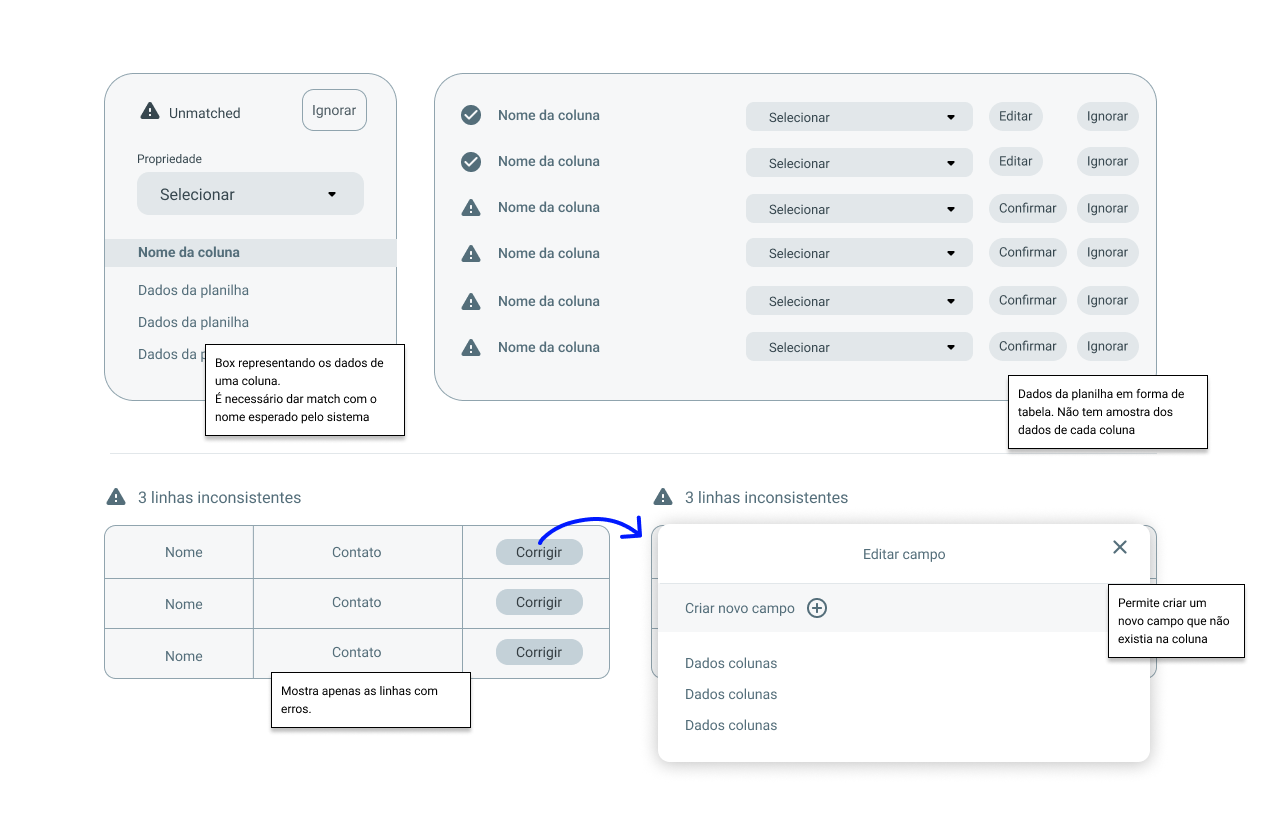


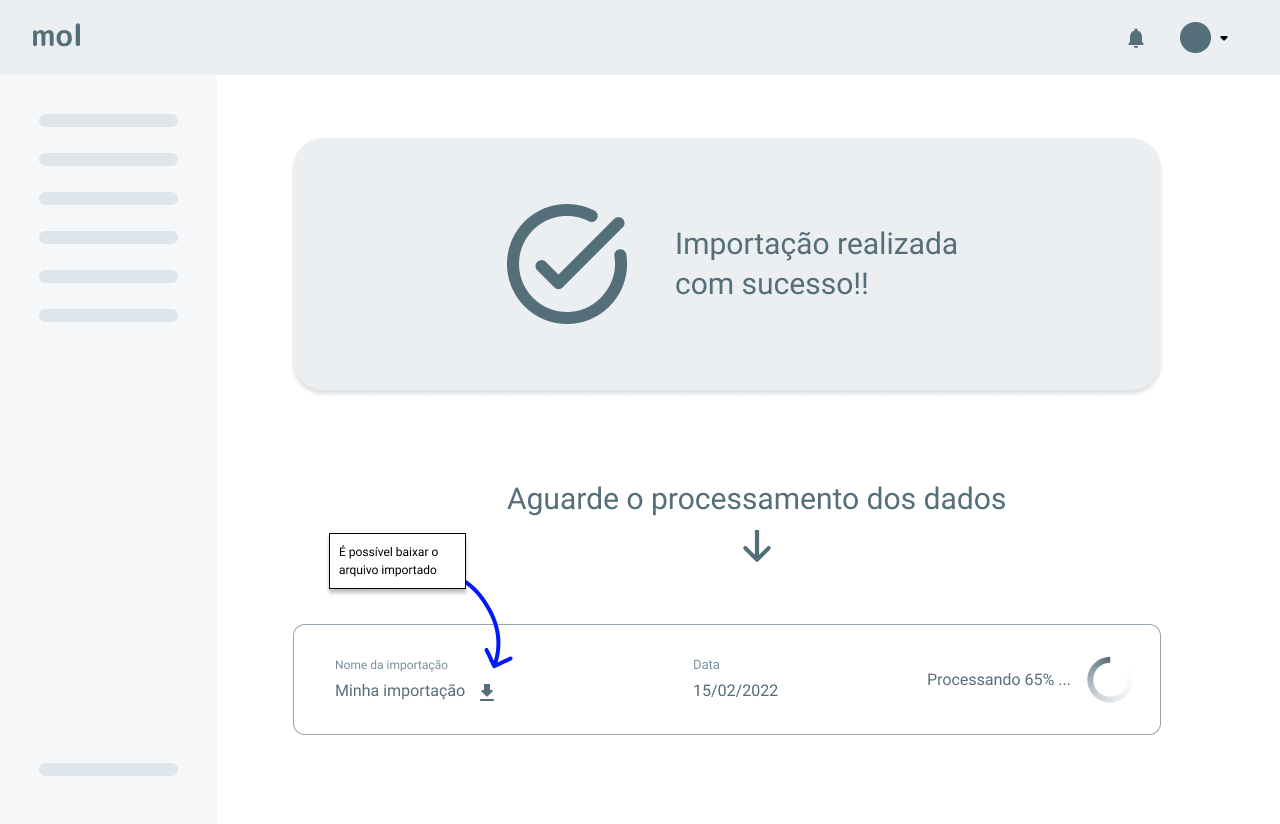
We designed the initial high-level flow of the product with the main steps for each user.
The points addressed are:

The high-fidelity prototype built upon the legacy of an existing Design System within the company, resulting in the majority of components already being available.
As identified in the interviews, one of the most critical points of the journey would be the transfer of data from the court system to the MOL system. The execution was carried out through spreadsheet importation and merging of the spreadsheet columns with the expected format by the system.
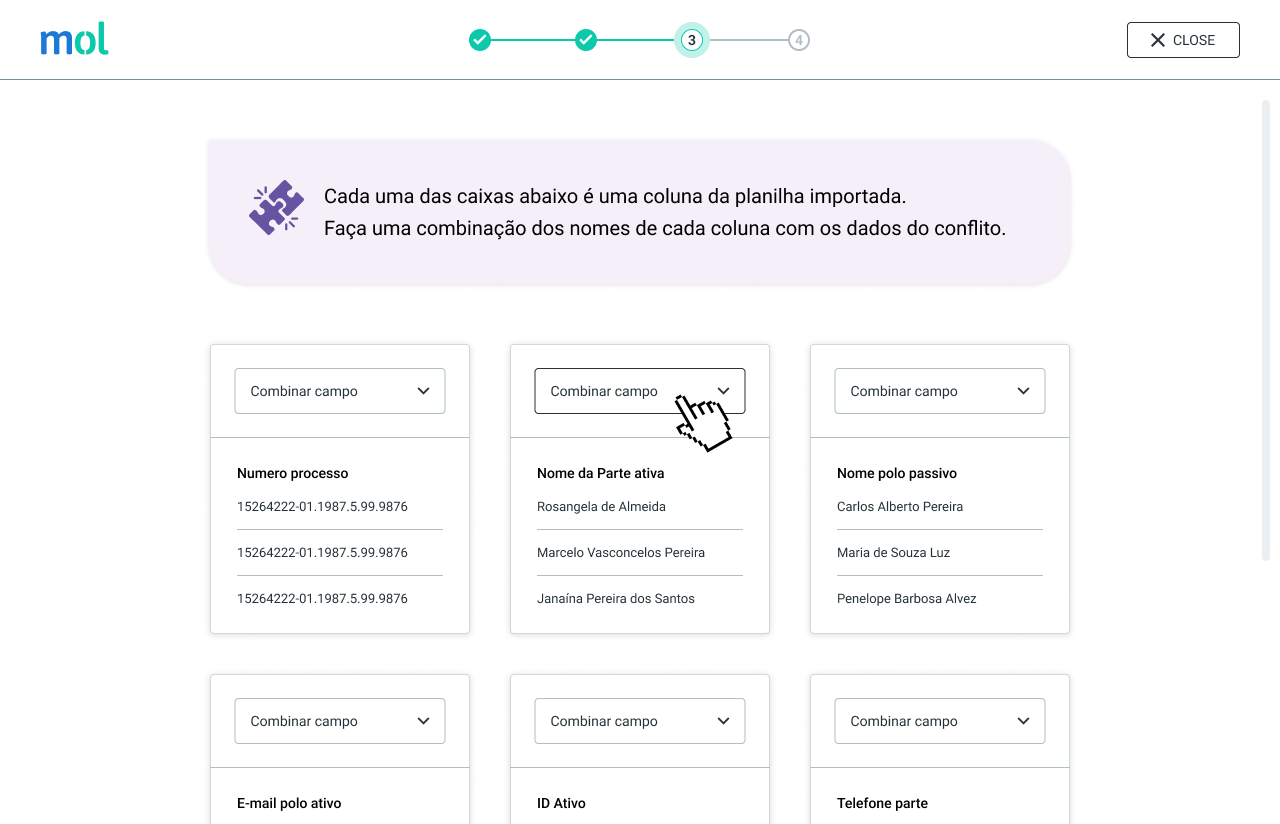
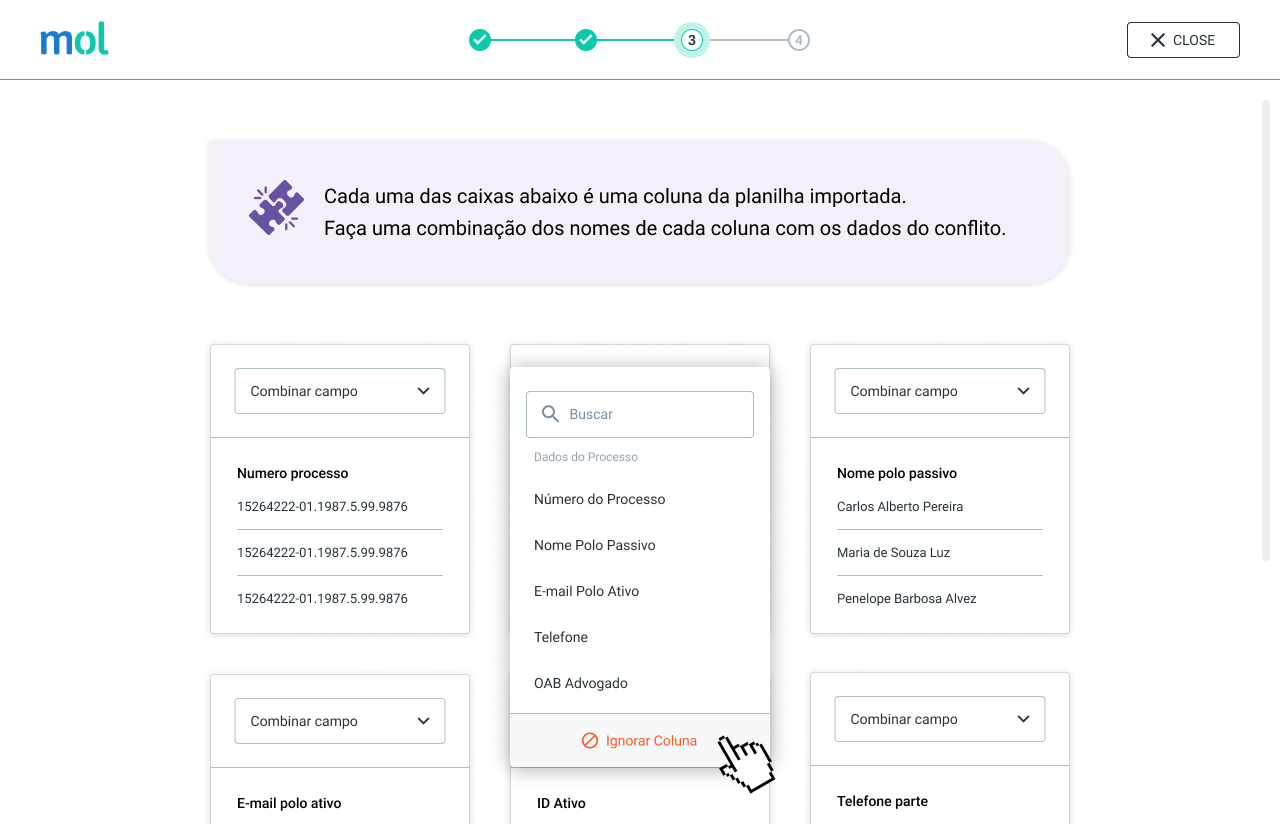
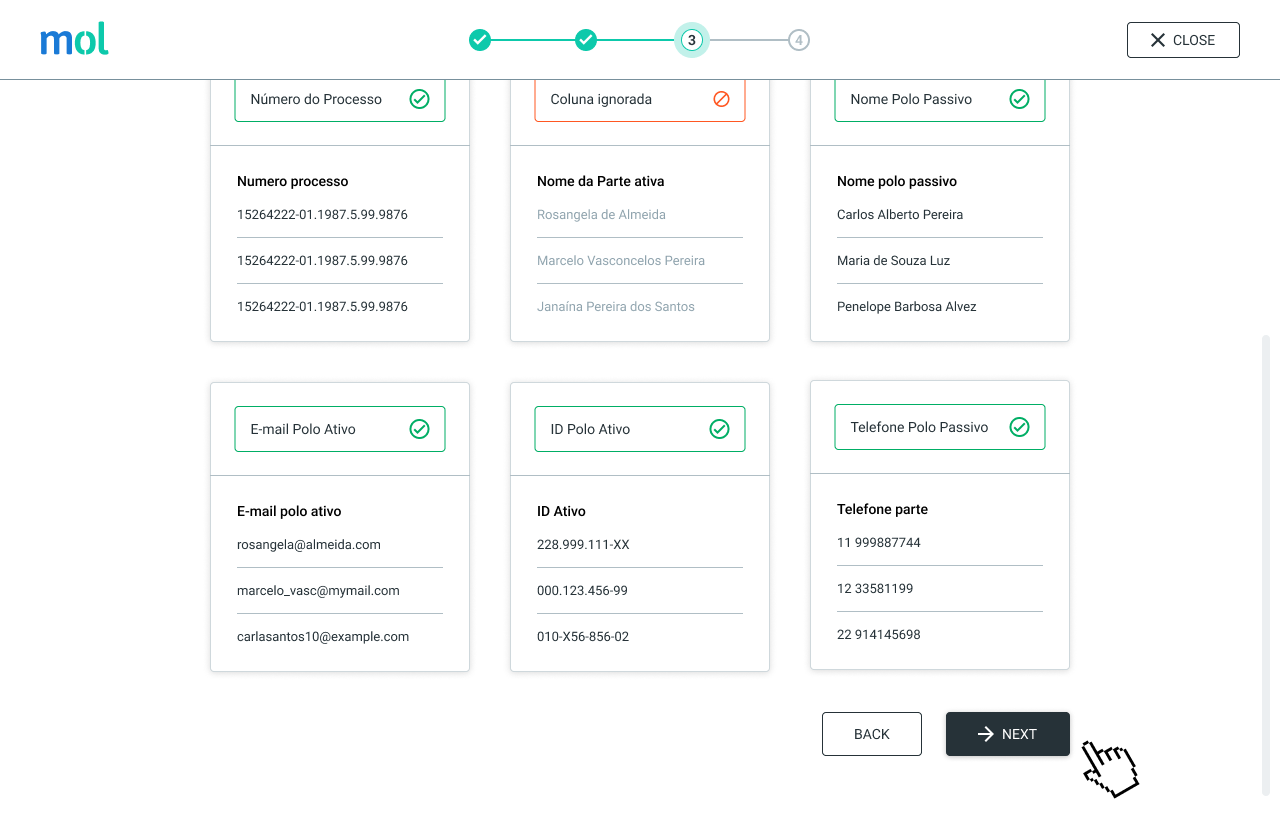
After the importation of the judicial cases, they will appear listed with the option to search by text, filter by status, or by expiration date. Each case is represented by a card with its respective data.

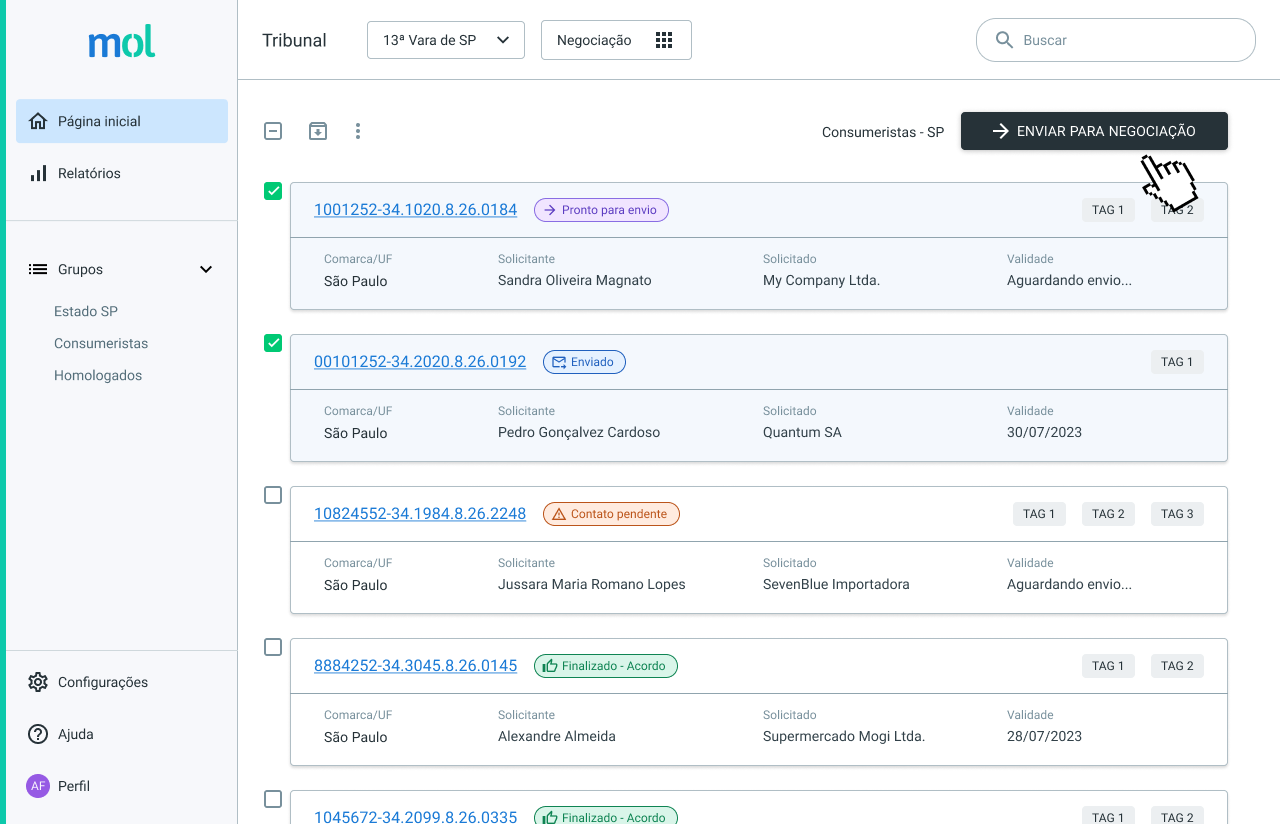
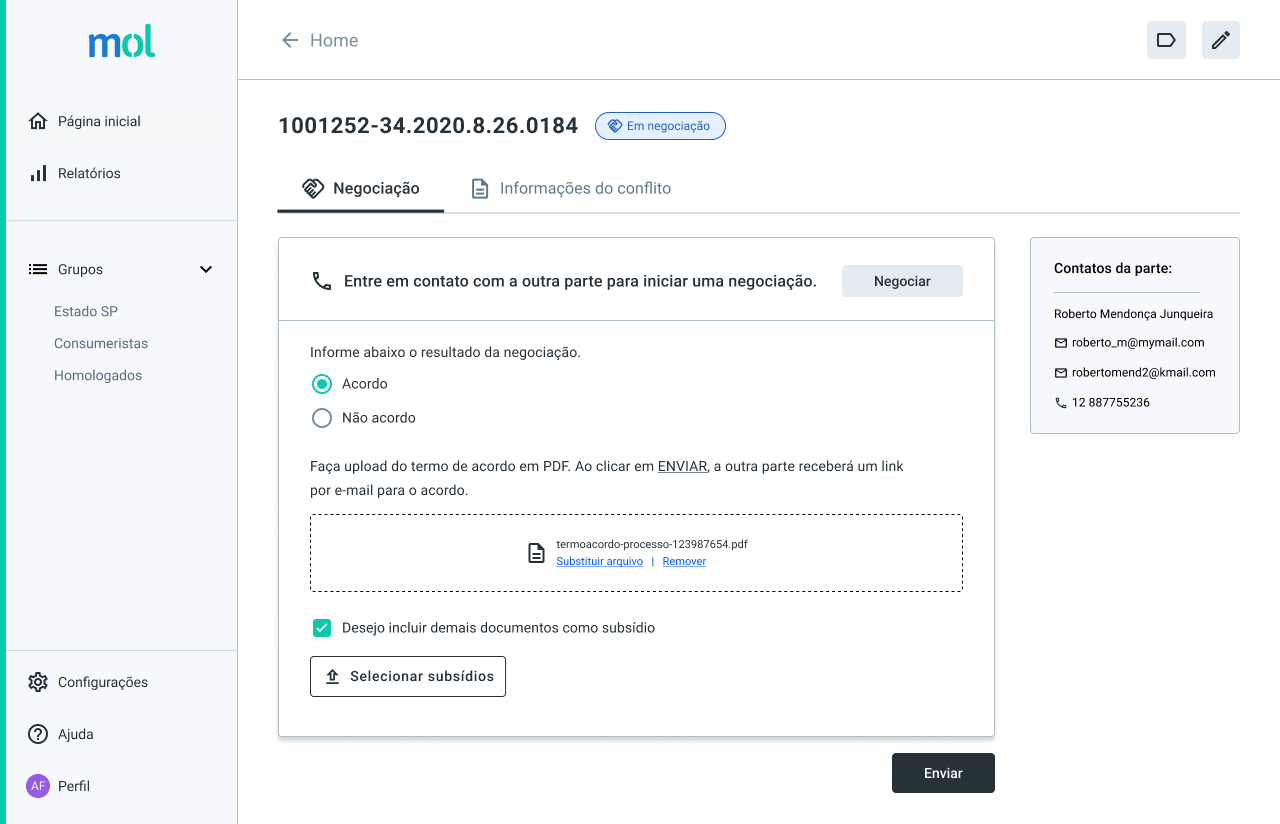
The "card" component was chosen to represent the judicial process because it is flexible and responsive.


